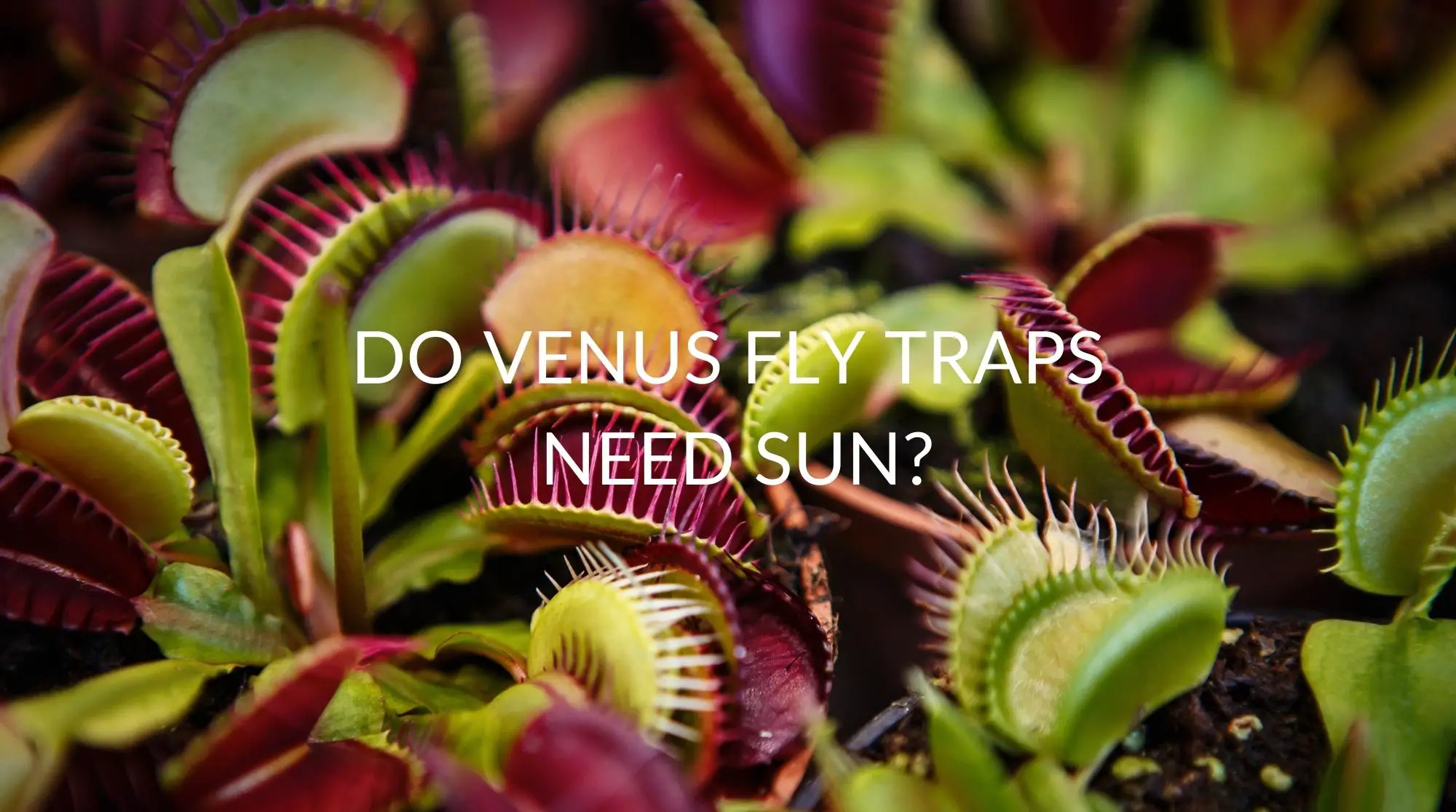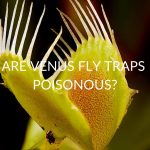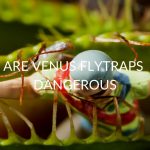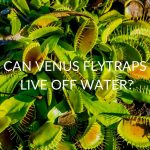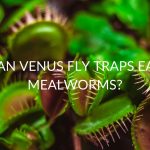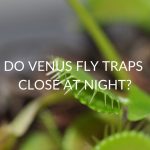Venus flytraps can survive without sunlight if they are exposed to the proper artificial lighting. Although direct sunlight is best for Venus flytraps, fluorescent and LED lighting can meet their needs. Whenever growing indoors, it is advised that artificial illumination be provided for at least 10 hours a day.
Continue reading to discover more about Venus flytrap and light, including how much light it needs, how to make sure your Venus flytrap gets adequate light, and more.
What is a Venus Flytrap?
Venus flytraps are carnivorous perennial plants that survive for up to 20 years in the wild. Insects supply nutrients that aren’t readily available in the soil, while they get most of their energy from photosynthesis.
Due to the obvious dramatic manner in which it catches its prey, the world-famous Venus Flytrap is the most remarkable example of a carnivorous plant. It can snap shut to grab even the quickest insects since it is one of the few plants capable of incredibly rapid movement. This plant never fails to captivate the mind with its brilliant colors and prominent extraterrestrial appearance.
Why Are Venus Flytraps So Popular?
Venus flytraps detect when an insect has landed on its leaf and closes around it to consume it. Bugs provide fertilizer rather than nutrients obtained through photosynthesis like other plants.
Can A Venus Flytrap Survive Without Sunlight?
If Venus flytraps are subjected to the correct artificial illumination, they can thrive without sunshine. Although Venus flytraps like direct sunshine, fluorescent, and LED lights can suffice. Indoors, artificial illumination should be given for at least 10 hours a day.
A Venus flytrap needs adequate light to be healthy. During their active development season, Venus flytraps require a minimum of 12 hours of light. If the plant is exposed to more natural light, it will be healthier.
Do Venus Fly Traps Need Sun?
Flytraps prefer full sun, and they require 12 hours of light every day throughout their development cycle to adequately photosynthesize. Direct sunshine should be present for at least four of those hours. If you’re growing your plant indoors, choose a window that faces east, west, or south. Alternatively, keep a “plant light” or fluorescent light nearby.
Grow your flytrap outside in full light during the growing season. For strong development, provide six or more hours of direct sunshine. If full sun isn’t feasible, get at least four hours of direct sunshine every day and brilliant indirect light the rest of the time. Your plant won’t be as vivid or intense as one planted in direct sunlight, but its general health will be preserved.
Can Venus Flytraps Grow Under Artificial Lighting?
Under the correct strength of fluorescent lights, Venus flytraps can definitely thrive. However, new Venus flytrap owners should note that these plants are more prone to sickness. The hardest challenge to growing your Venus flytrap indoors is to maintain adequate dormancy.
If placed under LED or fluorescent lighting year-round, Venus flytraps will ultimately perish. The yearly dormancy phase is required for Venus flytraps. During the warmer months of summer, Venus flytraps should be cultivated under lights and then moved to another location for dormancy. Winter dormancy can be achieved in a cold windowsill or outside.
How To Ensure Proper Lighting for Venus Flytraps?
Providing Artificial Lighting for Your Venus Flytrap
Another alternative for cultivating a Venus flytrap inside is to provide them with artificial fluorescent or LED lighting. Many expensive plant lights are available at your local hardware store or nursery. However, many home plant enthusiasts have had remarkable success using regular fluorescent light lamps.
If you want to utilize the Venus flytrap, keep it within 8 inches of the fluorescent light. As a result, the Venus flytrap will be able to obtain enough light to be healthy.
Using Cooler-Temperature Light Bulbs for Growing
A small fluorescent bulb is a cost-effective option when it comes to illuminating your Venus flytrap for the purposes of growth. Use color temperature bulbs designated “cool white” or “cool blue.” These bulbs produce a color temperature of 6500 kelvin, which is suitable for growth.
Providing Enough Light for Your Venus Fly Trap, But Not Too Much
The optimal light for Venus flytraps is bright yet indirect light. In the summer, it’s especially crucial to keep them in direct light since it can cause your Venus flytrap to become hot and cause the leaves to get crispy. Always keep a Venus flytrap four to seven inches away from LED lights when growing inside under artificial lighting.
Lighting and Humidity Work Hand in Hand
While sunshine is necessary for the growth of your Venus flytrap, without the suitable climate, water, and humidity, your plant will most likely dry out and die due to too much light exposure. Keep the surroundings damp and the soil moist for the best Venus flytrap care, but don’t submerge the plants in water all of the time.
Never offer your plants tap water since it is generally overly alkaline or contains too many minerals. Instead, rely on the rain or distilled water. One can also turn on a fan in the room where you store your Venus flytrap plants to allow for proper air circulation.
Only Give Light to Your Venus Flytrap in The Summer
Like many other plants, Venus flytraps require a time of winter dormancy during which they appear to be dead but are actually resting.
During this time of the year, keep your plant in a room at a temperature of 35 to 50 °F. When the days start to grow longer around the spring equinox, the temperature and light levels begin to rise. This will be the time to bring your Venus flytrap back to the light.
Increasing The Amount of Light Your Venus Flytrap Receives Using LED Lights
Since Venus flytraps need full sun to thrive when planted outside, you’ll need to set up lights to guarantee your indoor plants get adequate light. Even placing the plant in a window will not give sufficient light for it to grow.
The best choice to increase your Venus flytraps sun intake is to use LED lights since they can provide a lot of light without scorching the plants. They also use less energy than conventional lighting sources, such as fluorescent lights.
Is It Possible to Light a Venus Flytrap with A Regular Lamp?
While grow-light lights built exclusively for plants are available, a desk lamp or shop-light fixture would suffice and be less expensive. If you’re growing your Venus flytrap in a circular pot, a conventional lamp will work fine, but if you have a row of plants or are growing in a terrarium, a long shop light may be preferable.
One should always position the light to light the entire plant with the bulb about 6 to 12 inches away.
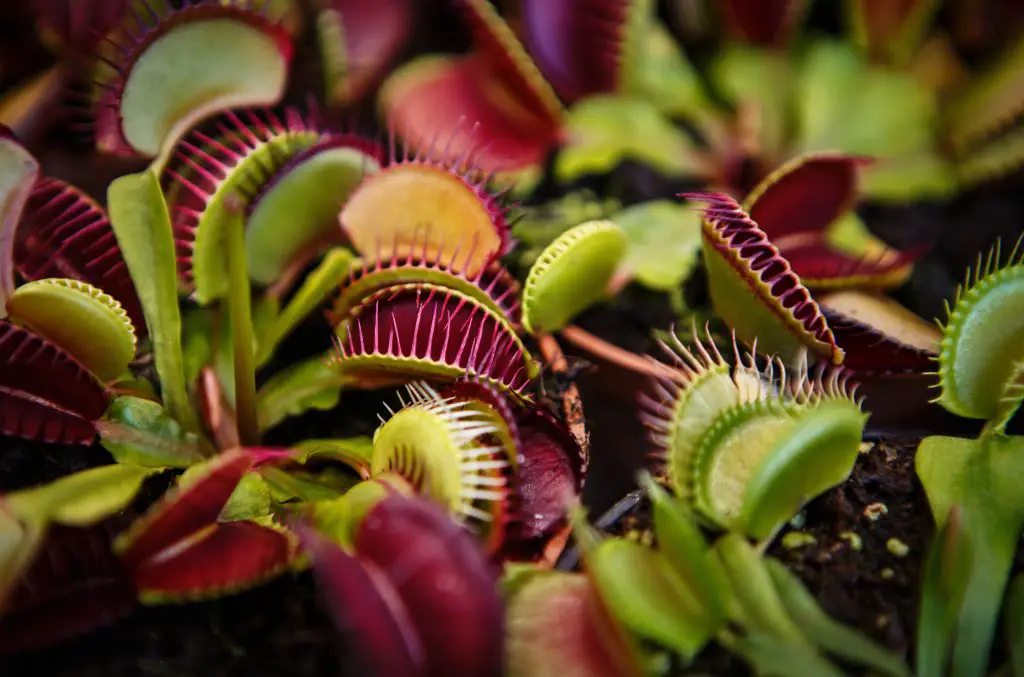
What Are the Signs of Poor Light Exposure in A Venus Flytrap?
If Venus flytraps aren’t exposed to enough light, they won’t live very long. If your Venus flytrap starts growing wide petioles or their leaves become discolored or droopy, these are some telltale symptoms that your plant is suffering from a lack of light.
Is Your Venus Flytrap Growing Wide Petioles?
To aid photosynthesis, Venus flytraps may develop broad petioles. Wide petioles often indicate poor light exposure. However, there are many distinct varieties of Venus flytraps, and some have thinner leaves than others.
Has Your Venus Flytrap Stopped Producing Healthy Leaves?
When Venus flytraps do not have enough water or light, they might get droopy or cease producing traps in their leaves. When your plants stop producing traps, the plant is in shock, focusing solely on photosynthesis. The plant will begin to develop trap-like leaves once the light exposure is rectified.
Are Your Venus Flytraps Leaves Discoloured?
Venus flytraps in good health have vibrant colors. Only when Venus flytraps have lots of light do they produce vivid red traps. It might be a symptom of poor growth circumstances or insufficient light if Venus flytraps abruptly lose their color.
FAQ
Can Venus Flytraps Survive Indoors?
Among the carnivores, the Venus flytrap is arguably the most well-known. Carnivorous plants are simple to cultivate indoors, as long as you provide them with a sunny location. A sun porch window with regularly opening and closing doors to allow in insects is ideal.
The optimal light for Venus flytraps is bright yet indirect light. In the summer, it’s especially crucial to keep them out of direct sunshine since it can overheat and cause the plant’s leaves to get crispy. Keep flytraps 4-7 inches away from fluorescent lights when growing inside under artificial lighting.
For more information, visit https://www.greenmatters.com/p/how-care-venus-flytraps-indoors.
Do Venus Flytraps Need to Be Covered?
Venus flytraps in domes are sold at large gardening stores and specific nurseries. The containers have several advantages when it comes to moving plants and conserving humidity and water. These containers, however, are not required for the growth of Venus Flytraps.
Outdoors, in open containers, is the greatest place to cultivate Venus flytraps. They need a lot of sunlight and water to grow. Venus flytraps prefer humid settings but may adapt to arid ones as well.
For more information, visit https://venusflytrapworld.com/do-venus-fly-traps-need-to-be-covered/#:~:text=Venus%20flytraps%20do%20not%20need,overheating%20issues%20in%20the%20summer.
Are Venus Flytraps Hard to Keep Alive?
One of the simplest carnivorous plants to raise is the Venus flytrap. Wet roots, high humidity, weak soil, and sunlight are their sole requirements for survival.
Venus flytraps are endemic to North and South Carolina, where they thrive in soils with low nitrogen and phosphorus concentration, such as boglands. Unfortunately, its widespread appeal among gardeners has resulted in dwindling natural populations. Greenhouses are being used to cultivate them.
While you may believe that all they require is a few flies here and there, the best approach to ensure that they survive is to replicate their natural developing circumstances. Growing them in terrariums can help keep the humidity and temperature just perfect. A tiny fish tank or bowl works fine in most cases.
Recap
Overall, Venus flytraps are considered sun-loving plants and should be given as much sunshine as possible. Because photosynthesis produces most of the plant’s energy, Venus flytraps are primarily green.
Since many Venus Flytraps reside in low-nutrient soil, they rely on photosynthesis for energy. What energy isn’t absorbed by light can be absorbed by their roots and the insects they catch. When a plant owner offers lots of light by giving their Venus flytrap an artificial fluorescent or LED light, the flytrap can develop and flourish even in the absence of insects or soil deficient of nutrients.

